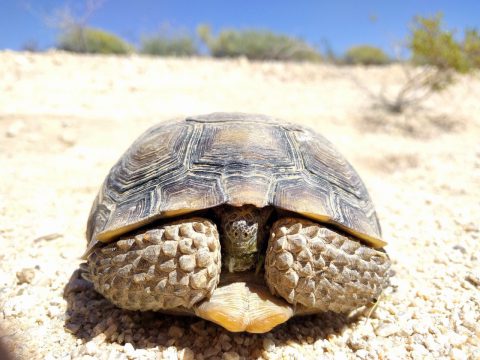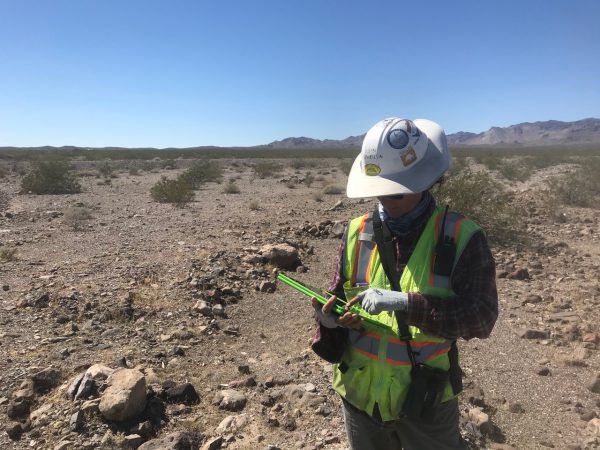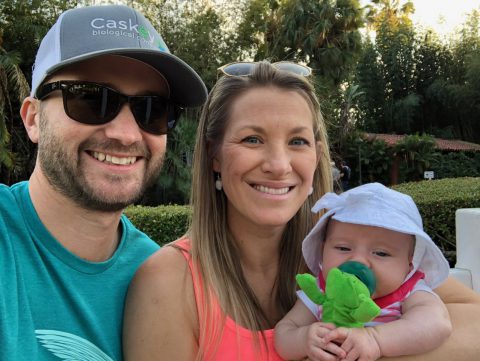Compliance Technology Edge
Monitoring Gas Pipeline Construction
“We pride ourselves and our reputation on scientific integrity and well-reasoned analysis.”
Caskey Biological Consulting, LLC (CBC) conducts environmental studies for pipelines, oil and gas exploration, wind farms, utility lines, highways, and other construction compliance project types throughout the United States.
“The biggest value in adopting Wildnote is easily the amount of time I have saved. It has essentially given me an entire day per week to focus on other tasks within our business.”
Mojave Desert Gas Pipeline Construction
The National Environmental Policy Act (NEPA) and the The California Environmental Quality Act (CEQA) are regulations that have proven themselves to be invaluable guardians of endangered wildlife and threatened habitat. While these regulations are necessary, compliance with them is often complicated, time consuming and costly for large infrastructure projects.
One of the key challenges for environmental consultants is how to increase efficiency during the biological survey and compliance reporting process in order to save their clients time and money. This study looks at a gas pipeline construction project in the Mojave Desert, where up to fifty biologists monitor hundreds of miles of construction through threatened species habitat.
Utility Infrastructure Compliance
People need power. Whether it’s gas, electricity, oil, or water, utility infrastructure spans long distances to get power from the source to the user. Careful planning, pre-construction assessments, and monitoring both during and after infrastructure construction are undertaken. All are measures that contribute to minimizing the negative impact of construction and protect sensitive habitats and threatened species. Caskey Biological specializes in providing companies “with comprehensive fieldwork and reports that will meet regulatory requirements and exceed [client] expectations.” For owners, Lindsey and Jason Caskey, that means delivering accurate environmental survey data while keeping utilities infrastructure compliance projects on time, and on budget.
Protecting Threatened Species Through Regulation
Desert tortoises have been listed as a threatened species since 1990. For decades, loss of habitat and disease have reduced populations. They live 60-80 years, reaching maturity at about 14-20 years old. While the tortoises live most of their lives burrowed into the ground in desert valley elevations between about 1,000 and 4,000 feet, they come out to breed and feed during the late winter and stay active through spring. Although the adult tortoises are well protected by their anatomy, eggs and hatchlings are extremely vulnerable.

Gopherus agassizii hatchling
Nearly 98% of desert tortoises never reach reproductive age. Sadly, human activity puts them at risk by collapsing burrows and crushing tortoises and eggs. Laying utility infrastructure through threatened tortoise habitat requires stringent environmental assessment, compliance monitoring and regulatory reporting.
The Challenge of Compiling Field Data
For business owner and field biologist Jason Caskey, data management tasks were laboriously slow. In fact, data management moved almost as slowly as the desert tortoise this particular project was trying to protect. Every day, he tediously copied survey results and photos submitted from field data collectors into a single document for his client’s weekly report. With 45-50 biologists in the field independently using a variety of Microsoft Word versions, this was a repetitive, frustrating, and very time-consuming part of the project.
“With all the versions of Word, often times formatting would be off. I was spending a lot of time every day reviewing, editing, and compiling reports. I had been thinking for a while that there had to be a better, more efficient way to go about it.”
He began researching different software tools to make his work more efficient.
Software to Collate Field Data and Customize Compliance Reports
Jason originally signed up for Wildnote’s free trial after finding it on LinkedIn. “I initially thought that maybe it wouldn’t work for us, and I let it go when the trial was over.” A follow-up call from Wildnote’s Gabi Ojile changed his mind. “Gabi called to ask me about my user experience, go over the issues, and talk about how they could make it work for us.”
With Gabi’s guidance, Jason soon realized that Wildnote was designed for just the type of work he was doing. He also learned Wildnote could create the exact custom export his client required. Together, they put the right solution in place. As a result, roughly 250 individual field surveys and associated photos are now easily merged each week into a single report for his client. “We now have a custom photo-management system that gives us the photo log and data report that we need wrapped into one,” Jason said.
Caskey Biological is using Wildnote on multiple monitoring projects for gas pipeline construction and maintenance through the Mojave Desert. Surveys include both active work areas and a buffer zone on each job site. As desert tortoises are protected, biologists must be specially qualified to monitor and survey them, and compliance requires daily reports. The projects vary in distance, spanning ranges from 20 feet to a hundred miles through desert tortoise habitat.
Monitoring Endangered Species Requires Patience
Protecting endangered species requires patience. “Spring and fall are active seasons. Yesterday we saw four tortoises,” Jason said.
“Our preference is to never disturb or touch them. We have the authority to stop work and we will always give a tortoise time to vacate the area on its own. Sometimes we have an authorized person relocate the tortoise off a road or job site, but still within its ranging area. Then we monitor to make sure it is staying out of danger.”

Gopherus agassizii
Interestingly, desert tortoises use multiple burrows. Field biologists flag any active burrows they locate so that the utility can avoid them. If a tortoise is found inside, survey staff consider moving it to another burrow. Inactive burrows are collapsed to deter the tortoises from coming back to the site. Each activity requires meticulous documentation and reporting.
“Wildnote has really helped us solve the time consumption problems that come with field documentation, and also managing and reporting that documentation in the office. Additionally, I know the formatting for everyone’s reports will be the same.”
Minimizing Field Data Transcription Errors
With Wildnote, biologists in the field no longer have to carry laptops and cameras to log photos and type up their observations. Now they can use their phones or tablets to enter survey data while out in the field. Eliminating the need to transcribe handwritten notes reduces paperwork, and also helps reduce transcription errors and improve data integrity. And because Wildnote is both iOS and Android compatible, biologists have the convenience and familiarity of using their own devices.

Jason said that because employees easily took to the new technology, it was quick to deploy.
“Some old-school folks needed help getting going, now they all love it! The duplication feature is popular and the feedback from the field has been positive. About five users had concerns or questions, but now everybody is on board.”
Wildnote provided onboarding support and Jason created a user document to help staff transition easily.
Construction Compliance Report Uniformity
Jason estimates that each field data collector saves about an hour per day, while Jason himself saves an additional 10-12 hours each week on administrative tasks. That translates into financial savings of $900-$1100 per week for his time and roughly $5000 per week for the field biologists.
“Our client loves it and is considering requiring their other contractors to adopt Wildnote. They like the uniformity of the reports and we’ve been able to save them money, so it makes us more competitive.”
Significant Cost Savings on Gas Pipeline Construction
Using Wildnote’s software produced significant cost savings for Caskey Biological on its Mojave Desert gas pipeline construction compliance project. Not only did it save survey field hours, reduce data errors, and improve reporting, but it won over the client. Wildnote’s specialized features, easy interface and responsive customer service gives the company a competitive edge, and the owners, a better quality of life.
“The biggest value to me is easily the amount of time I have saved. It has essentially given me an entire day per week to focus on other tasks within our business.” Jason said. “I have a 3-month-old daughter and my wife and I run the business.”



